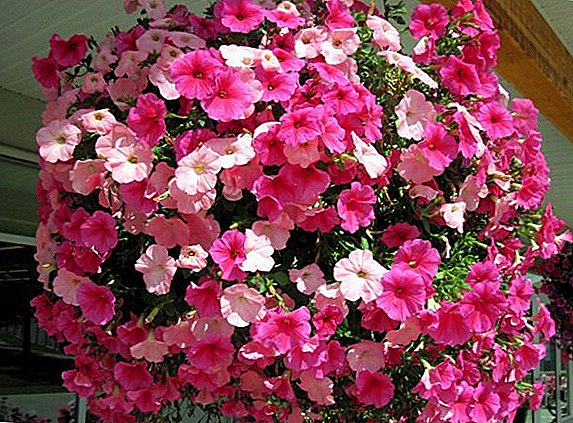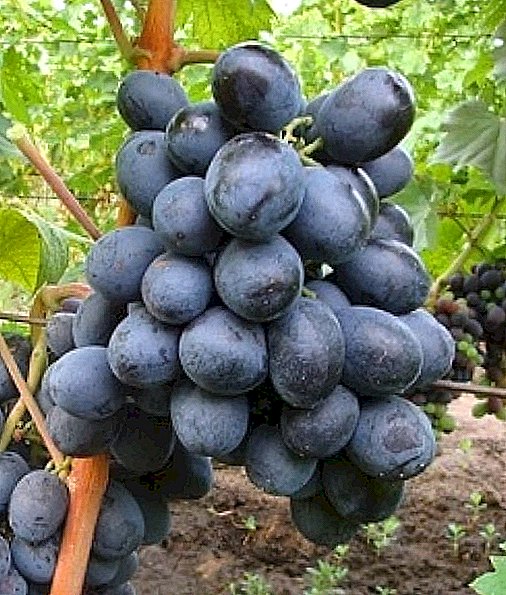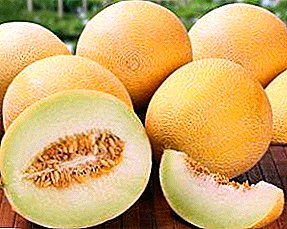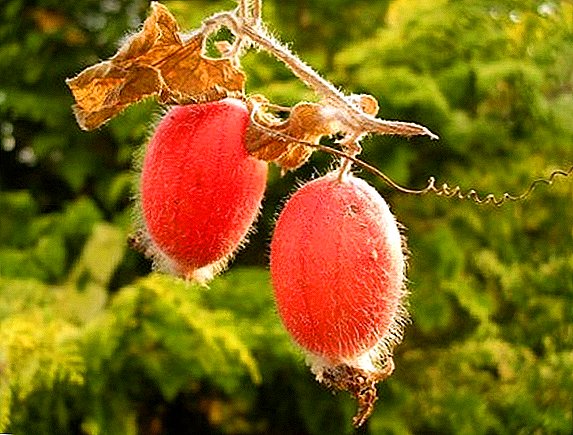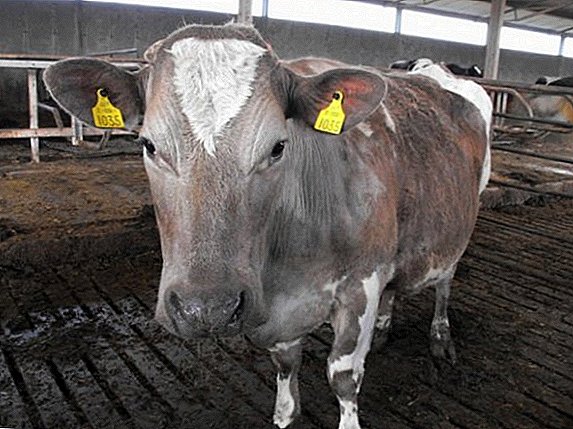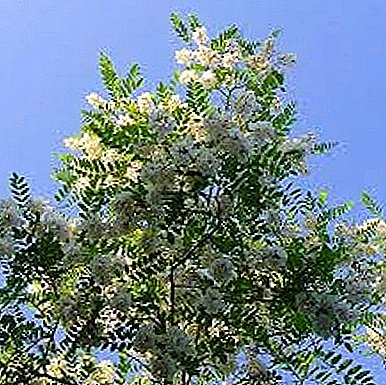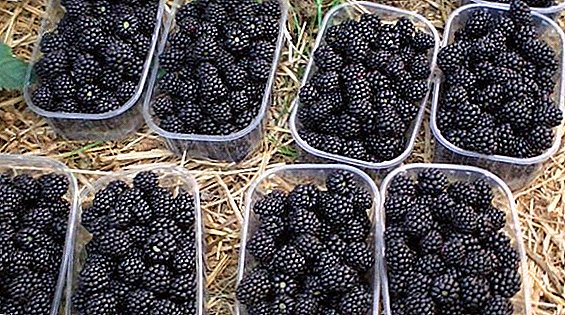 Curly lilac from the legume family is dolichos, or hyacinth (Egyptian) beans, or lobia. Dolichos purple - climbing perennial plant with beautiful soft lilac flowers. In any garden composition, it attracts admiring glances, bestows light shading, being planted near benches and arbors, decorates garden arches and pergolas.
Curly lilac from the legume family is dolichos, or hyacinth (Egyptian) beans, or lobia. Dolichos purple - climbing perennial plant with beautiful soft lilac flowers. In any garden composition, it attracts admiring glances, bestows light shading, being planted near benches and arbors, decorates garden arches and pergolas.
Only the observance of all stages of cultivation will help grow a strong and beautiful creeper, which will delight the owners and decorate the garden until the frost. Let's look at how to sow the seeds of dolichos, how to care for the plant, and at what time to plant it in a permanent place.
Meet the Unusual Beans
In hot and southern countries dolichos grows year-round, according to its characteristics it is a perennial. In our climate, curly lilac runs the entire life cycle from germination to flowering and gradual drying in one summer season.  There are many varieties of dolichos, but any of them over the summer grows in length to three meters. The plant has a grassy stem and triple rounded leaves with a pointed tip, the color of the leaves varies from dark lilac to green. But it is the varieties with burgundy or purple leaves that have a special decorative effect. Long inflorescences consist of medium-sized, delicate lilac flowers, similar to small moths.
There are many varieties of dolichos, but any of them over the summer grows in length to three meters. The plant has a grassy stem and triple rounded leaves with a pointed tip, the color of the leaves varies from dark lilac to green. But it is the varieties with burgundy or purple leaves that have a special decorative effect. Long inflorescences consist of medium-sized, delicate lilac flowers, similar to small moths.
The legume family gives us such beautiful ornamental plants as tsertsis, sweet peas, broom, bauber, acacia.Inflorescence is formed at the base of the leaf blades of the vine. Shades of flower color depend on the plant variety, they are two-colored, pink and snow-white, bluish-crimson or dark purple. It also looks very picturesque pods in which the grain is formed and poured. Against the background of green or burgundy foliage purple pods look fantastic.
When the flowering period ends, as the flowers fall from the inflorescence, purple bean pods form in their place, of a very bright and unusual color. It is difficult to pass without noticing, by such a bright plant.  Interesting and matured seeds are dolichos, in the form of a small, slightly curved bean of black, brown or orange color with a white compacted edging along the edges. The size of such a bean usually does not exceed 1-2 cm. The pod in which there are grains of a flattened, flattened form, at the end of the testis, a sharp, slightly curved nose is clearly visible.
Interesting and matured seeds are dolichos, in the form of a small, slightly curved bean of black, brown or orange color with a white compacted edging along the edges. The size of such a bean usually does not exceed 1-2 cm. The pod in which there are grains of a flattened, flattened form, at the end of the testis, a sharp, slightly curved nose is clearly visible.
The length of the pod ranges from 10 to 13 cm. Whole bunches of purple pods, gradually replacing long inflorescences of vines, in combination with lush greenery adorn the gardens and fences until late autumn
The flowering of dolichos continues until deep autumn: pods ripen on the lower part of the plant, burst, releasing ripened seeds, the leaves begin to turn yellow, and at a height of three meters the bundle of lush greenery is decorated with a mass of newly blossoming lilac flowers.
Important! Like other members of the nodule family, the roots of dolichos are nitrogen-containing bacteria. The plant has the ability to accumulate and retain nitrogen in the soil, it can be sown specifically to enrich and fertilize the land in the beds.
Seed preparation before planting
Hyacinth beans or climbing lilacs are quite simple to grow from seeds, the main thing for the growth of vines is the period when you need to plant a seed. But the process of growing from the seeds of dolichos purpurea in the southern regions, the middle belt or in the north of the country is significantly different. But in any case, the seeds are desirable to scarify. The seeds of legumes have a fairly strong upper shell of the grain.  One of the advantages of legumes is a long term seed germination. Bean can rise in appropriate conditions (heat, moisture) and 5-7 years after ripening and harvesting. The main condition for the preservation of seed germination is storage in a dry place with a suitable temperature. Seeds can be stored at sub-zero temperatures, but storage at temperatures above 25 ° C has a bad effect on the reproductive qualities of dolichos grains.
One of the advantages of legumes is a long term seed germination. Bean can rise in appropriate conditions (heat, moisture) and 5-7 years after ripening and harvesting. The main condition for the preservation of seed germination is storage in a dry place with a suitable temperature. Seeds can be stored at sub-zero temperatures, but storage at temperatures above 25 ° C has a bad effect on the reproductive qualities of dolichos grains.
For the sprouting of a long-stored seed of a vine, mechanical damage, scratching (scarification) or another violation of the upper seed coat is necessary. Such seeds germinate within 5-7 days; the main requirement for sprouting the germ is heat and watering.
Did you know? In South America, you can see houses or trees twisted around ten meters wide. "plumes" dolichos Due to the almost perpetual summer, the plant blooms non-stop, increases large brightgreen leaves and covers all new and new areas.
Growing seedlings
In the south, creeper seeds are sown at the beginning of April in a prepared, loose and wet, fairly warm open ground. But even in the south of Krasnodar or in the Crimea this liana remains an annual plant, at temperatures below zero the plant dies.
In more northern areas, the cultivation of dolichos from seeds must be started long before the time of planting a young plant in the ground. Decorative lianas are grown by seedling method.
It is not difficult to determine when to plant a seed in the soil for seedlings. To do this, just count 55 days in the opposite direction from the estimated date of disembarkation of a young liana on the street.
For the northern areas, planting plants that do not tolerate even short-term temperature drops below zero, planting in unprotected soil is made in the last days of May or the first decade of June.
In order to grow good, healthy seedlings of hyacinth beans - we prepare the soil for sowing seeds.  You can independently mix the soil mixture from the following components:
You can independently mix the soil mixture from the following components:
- 1 part clean river sand;
- 1 part crushed humus;
- 1 part of the ground fraction of the peat fray;
- 1 part black soil.
Processed soil mixture is poured into seedlings or special pallets for seedlings, lightly watered. Wait until the extra fluid flows out of the seed container into the pan. After that, 1-2 beans of curly lilac are planted in each glass. Seeds are planted to a depth of one centimeter. The cups with the planted seeds are once again lightly watered with water, then covered with plastic wrap and put in a dark and warm place.  If the seeds are fresh or perennial, but scarified, then being germinated at a temperature of 25-27 ° C, the first shoots may appear on the fifth or sixth day. Pasting sprouts - this is a very important point, it should not be missed. If a seedling receptacle with a sprout that has slipped is not put in time on the window, where there is plenty of daylight, then such a plant will become thinner (flow out), will be weak and susceptible to diseases, and may even die.
If the seeds are fresh or perennial, but scarified, then being germinated at a temperature of 25-27 ° C, the first shoots may appear on the fifth or sixth day. Pasting sprouts - this is a very important point, it should not be missed. If a seedling receptacle with a sprout that has slipped is not put in time on the window, where there is plenty of daylight, then such a plant will become thinner (flow out), will be weak and susceptible to diseases, and may even die.
When a pair of dolichos sprouts appear in each cup, all the seedlings will already be in a well-lit place (window sill, closet). Further care for young sprouts is simple - as the soil dries up in seedlings, the plants are watered, once a week the ground is slightly loosened with a wooden stick or a regular table fork.
With normal growth and development of plants, 2 weeks after the sprout appeared from the ground, the first two true leaves will appear on the seedlings. After that, the florist of two plants growing in a glass, choose one, the most robust and healthy in appearance. Second, the spare plant is removed.
Important! Removing an extra seedling, in no case can not roughly pull it out of the ground. Using scissors, the sprout is neatly cut (pinched) right on the ground. Such careful removal of an unnecessary sprout will not disturb the root system of the neighboring plant.

Transplanting seedlings in open ground
Growing lobio does not seem too complicated even for a novice gardener. It is only necessary to follow the simple algorithm of growing this unusual and very elegant plant, and in gratitude, your flower garden or garden will play with new bright colors.
The use of any climbing plants will decorate any arbor - be it aconite climbing, actinidia, girlish grapes, wisteria, petistal hydrangea, honeysuckle, clematis, climbing rose, ivy.
Optimal timing
Curly lilacs (hyacinth beans) are planted in open and unprotected soil in late May or early June. Landing is possible at the onset of sustainable heat, without fear that night frost will return. Care of the beans at the beginning of the growing season is heating and watering. If you are not sure that the lobio sissy can be determined for permanent residence, and the landing dates are already starting to rush, we recommend to purchase plastic wrap. In the case of weather surprises, this film will save the winding lilac from the destructive cooling.
Choosing a place
Lobio reacts negatively to growth in the shadow or partial shade. In order for the plant to feel well, you need to choose open, sunny places for planting or planting. If you want to decorate the building wall with a curly lilac and want to get the maximum decorative effect, plant the legumes near the east wall. It is in the east the plant will grow the most powerful stem and large leaves and inflorescences.
Scheme
When planting vines, it must be borne in mind that when gaining growth, the plant will also gain volume:
- Hyacinth bean bushes are planted from each other at a distance of 45-50 cm;
- if the planting is not in the garden, but in a vegetable garden, then the beans can be planted in a two-row pattern;
- the second row of plantings is planted in a staggered manner with respect to the first row planted;
- the width of one row between rows is up to one meter;
- if the planting of several such beds is planned, then a path of 70-80 cm is left between the two-row beds.
Important! In order to mulch the beds, in no case can one use sawdust that has been acquired in factories that work with chipboard. They contain phenols, varnishes and remnants of furniture glue!

Leaving with knowledge
Further care for the planted hyacinth beans (lobio) is to cover the plants with plastic wrap in case of unexpected temperature drops, in a timely watering, in the treatment of insecticides from aphids or other leaf-sucking insects.
Once in 10 days, the beds or beds where the vine is planted are weeded, to clean the soil from weeds. Two weeks after disembarking, young lianas need to pile up with earth to a height of 20-25 cm. This will allow the plant to increase the additional root mass, which will positively affect its development and growth.
Watering
All legumes in dry soils or soils with poor irrigation slow down or even stop their growth. Do not allow the drying of the root layers in dolichos. If the gardener does not have the opportunity to ensure regular watering of the vines, then measures should be taken to retain moisture. For example, lay a bed at the foot of the plant mulch. For mulching, you can use old, unnecessary remnants of roll wallpaper. Paper prevents the evaporation of water from the soil, passes water during irrigation and delays, if not completely prevents the growth of weeds.  For not time-consuming and long-term watering gardeners use plastic bottles from under the mineral water. Under each liana is placed on the side of a bottle, pre-filled with water. For subsequent watering, slightly loosen the closed cap on the bottle. Adjust the lid opening until water is added to the plant drop by drop. Water in the bottle is enough for a seven-day watering, while the moisture will not spread, wet the upper layers of the soil. Drip irrigation gradually moisturizes the soil near the vine to the deep subsurface layers, which means that water flows to the roots.
For not time-consuming and long-term watering gardeners use plastic bottles from under the mineral water. Under each liana is placed on the side of a bottle, pre-filled with water. For subsequent watering, slightly loosen the closed cap on the bottle. Adjust the lid opening until water is added to the plant drop by drop. Water in the bottle is enough for a seven-day watering, while the moisture will not spread, wet the upper layers of the soil. Drip irrigation gradually moisturizes the soil near the vine to the deep subsurface layers, which means that water flows to the roots.
Support
As soon as all creepers are full, a reliable support should be installed near each plant. Curly lilac because it is called that this plant is developing, tends upward. To do this, hyacinth beans have special antennae, with which plants cling to the support, growing near plants, dredging in the walls of houses or holes of the chain-link mesh.
It is necessary to conveniently arrange climbing vines, so that they can grow upward unhindered and show themselves in all their glory.  Here are a few options for such supports for creepers:
Here are a few options for such supports for creepers:
- trunk growing near dry wood;
- chain-link metal mesh with wide cells;
- wooden pegs, three meters high;
- stationary high trellis (as for tomatoes);
- beautiful wooden lattice portable pyramids-supports.
Top dressing
A month after planting seedlings on the street, the plant needs feeding. For feeding you can use any complex mineral fertilizer for flowers or vegetables.
You can use natural organic dressing:
Option number 1
Half of a 10-liter bucket filled with chicken manure. Fill the contents of the bucket with water to the top. Stir well. Set the bucket in a sunny place for subsequent fermentation and cover with a lid. After a week, the concentrated fertilizer is ready.  To fertilize plants at the root: add 0.5 liters of concentrate to 10 liters of water. Stir. Fertilizer is ready to use. The diluted solution must be used immediately, since during prolonged storage the most important component will disappear from it - nitrogen.
To fertilize plants at the root: add 0.5 liters of concentrate to 10 liters of water. Stir. Fertilizer is ready to use. The diluted solution must be used immediately, since during prolonged storage the most important component will disappear from it - nitrogen.
Important! This fertilizer is suitable not only for legumes, but for any flowers and vegetables.Option number 2
Large capacity is filled with weeds from the garden to half. Garden nettle is very good for green manure, but any weeds will do. Next, the barrel is added to the edge with water and covered up is left for fermentation for two weeks. Periodically, the contents of the tank is mixed with a wooden pole, since the solution must be enriched with oxygen.
The finished solution is also a concentrated fertilizer. Before watering with top dressing it must be diluted: add three parts of water to the fourth part of the present green concentrate. 
When and how to bloom
The flowering of dolichos begins in mid-summer and continues until the first frosts. The flower inflorescence of the creeper blooms for up to one month, each individual flower of the inflorescence lives from one to three days. Elegant lobio inflorescences can be cut for bouquets; in a vase, such a cut retains freshness for 5 to 7 days. In one inflorescence there are up to 50 flowers, which have a pleasant, not sharp aroma.
The first flowers in young inflorescences will appear on the beans three to four weeks after planting in the garden. To collect ripened seeds of plants suitable for reproduction in the future, you need to wait until the inflorescence has faded, and the purple pods replace the showered flowers. Beans from the pods are taken only after the pods are completely dry and change their color to sand. Ripe pods burst from light pressure, grains from dry pods fully ripe. Each pod harbors 4-6 grains. Seeds are able to germinate 5 years. 
Application
In the seeds of curly lilac there are substances necessary for the human body:
- squirrels;
- iron;
- magnesium;
- phosphorus;
- zinc;
- vitamin b;
- vitamin c
Did you know? Scientists from the United States, studying the positive and negative sides of eating dolichos, came to the conclusion that the beans included in the diet help in the fight against obesity.

For decorative purposes
Beautiful green pyramids, hung with lilac tassels of long inflorescences, will decorate any garden. Dolikhos is used in the form of climbers and when planning the planting of vines and their future decoration, this is necessarily taken into account.
Gorgeous blooming creeper looks great on forged and wooden decorative arches. Also plants plant summer arbors around the perimeter, which results in a luxurious blooming tent providing a peninsula with vacationers.
Sometimes the florist decides to use a non-standard solution in providing a support for dolichos, and it is planted in the tree trunks of an old tree. An apple-tree hung with apples looks very exotic, with bunches of lilac beans and flowers hanging from the branches of it at the same time.
Important! Chinese flowers dolichos cure difficult cases of alcoholism, as well as the flowers of this plant are recognized drugs in the regulation of the menstrual cycle in women.
In cooking
Dolichos grain has long been used in cooking and is prepared in the same way as regular beans or beans. In Georgia, this plant is called lobio, and is made from it a delicious dish.  Dolichos bean beans simply replace the beans in the usual foods. As in conventional legumes, in hyacinth beans a lot of protein is a very nutritious product.
Dolichos bean beans simply replace the beans in the usual foods. As in conventional legumes, in hyacinth beans a lot of protein is a very nutritious product.
If the dolichos beans are dried for long-term storage, then before eating they need to be poured with water and left to swell overnight. These beans are used when cooking soups, borscht, cooking stewed vegetables.
Unripe pods of vines are used in marinades, they are fried and baked, added to meat and vegetable dishes, in salads. In some countries, dolichos flowers are also used as food.
Did you know? Egyptian beans are unusual not only because of their gigantic growth, but also because they differ from many climbing vines in the direction of growth of the clinging antennae - they twist the support strictly against the clockwise movement.Also, the seeds of this plant can be harvested, freezing or canning. The plant is very fruitful and will serve not only the summer decoration of your site, but also the basis for culinary experiments.
Having spent a bit of time and soul, the gardener will grow beautiful plants that, with proper and timely care, will decorate the garden or flowerbed with their beauty, enrich and expand the summer and winter menu for the whole family with new dishes.


